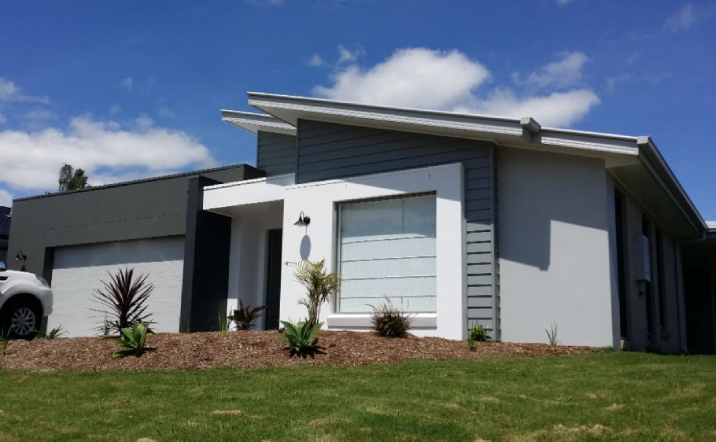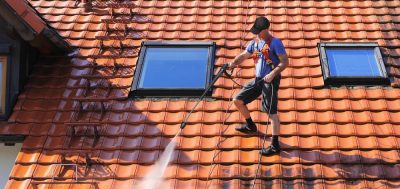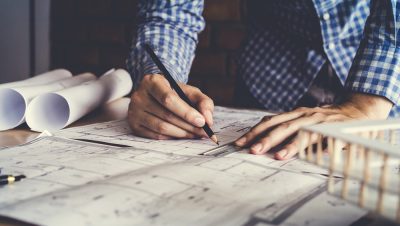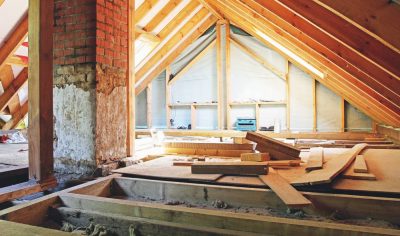- Oneflare /
- Cost Guides /
- Cladding

How much does cladding cost?
$60 - $95 per m2
How Much Does Cladding Cost?
House cladding prices are not straightforward and isn’t just affected by the size of your home. House cladding costs range from $35 to $90 per square metre plus labour, which is about $60 to $95 per hour.
Replacing the house cladding is something that most homeowners will eventually face. Even if the cladding is not damaged, it will eventually wear out.
Below is the average hourly labour cost for installing cladding in different Australian states:
| State | Average Hourly Cost |
| NSW | $65 – $90 |
| VIC | $65 – $95 |
| WA | $70 – $90 |
| QLD | $60 – $85 |
These are approximate prices. The total cost still varies on the material variations, project size, permits, waste removal, and other considerations. Consult a cladding professional for a more realistic estimate for your project.
Factors Impacting Cladding Costs
Many factors affect the cost of cladding and can add to the price. Here are some examples.
Material
The material you choose is one of the most significant cost variables that affect the project’s cost.
Timber cladding is the least expensive, but you need to purchase high-quality materials and ensure that it is properly sealed against the weather. Stone veneer is the most expensive but durable and gives the home a high-end feel. There are many choices in between these two. They all have advantages and disadvantages that may change depending on location and climate.
Size of your home
The size of your home is another factor that affects the cost. Of course, you could expect to pay more for a larger, multi-storey home than for a smaller one-storey home. The price of materials varies greatly and will affect the final price, but this also gives you a factor you can use to adjust your budget.
Design
Combining types of cladding to highlight the features of your home can add value to the property if done professionally. However, this can also add considerable expense. It requires a design professional who is experienced in selecting the appropriate materials for your type of home and installing them correctly. Combining two materials allows you to add a few high-end accents at an affordable cost.
If you’re considering wainscoting, a type of cladding featuring distinctive panels installed on the lower half of interior walls, you can consult with your contractor. For the cost, you may want to use a wainscoting calculator to estimate how much you’ll need to add for the feature.
Remedial work needed
In some cases, depending on the integrity of your existing cladding and the type of new cladding chosen, you can install the new cladding over the old. However, you’ll need to remove the old cladding if it’s been heavily damaged by mould. With this, you need to do some repairs before installing the new cladding. This can add considerably to the cost of cladding.
Repairs to your frame
Any necessary exterior renovations will add to the cost of the job, but if there is structural damage, the price can soar considerably. If your framing has damage from water or the weather, then it must be repaired before installing the new cladding, adding another cost to your project. You will most likely not know about these problems until the project has already begun.
Scaffolding costs
The ability to access all areas of the home can affect the cost of the job. In areas with a hill or surrounding property that is too close, this can mean special equipment is necessary. If the project requires scaffolding, it can add another $5,000 to $8,500 to the cost of the project.
Asbestos removal
The black felting, insulation, or tiles in some older homes might contain asbestos. Removing asbestos will require hiring a licensed asbestos remover to remove it safely before the cladding can continue. Asbestos removal can add about $25 to $75 per square metre.
Window replacement
You might need to repair or replace windows or doors as part of the remedial work, which can add an additional 5% to your project costs.
Transportation
Transportation costs are another thing you need to factor in, especially if your material supplier is far from your property.

Modern house with cladding and rendering on the exterior. | Source: Pe Constructions Pty Ltd
Price Estimates for Different Types of Cladding
As you can see, some factors can add an unexpected expense to the final cost of the project, but wall cladding prices also vary according to the material. Here are some examples of external wall cladding prices for various materials.
Timber cladding
Timber can add a charming, rustic look to the home. Timber cladding costs vary greatly depending on the type of wood chosen. For instance, tight knot pine costs about $6 per linear metre, and Tallowwood can cost as much as $15 for a select grade. Different types of wood have different appearances and different weather resistance characteristics. Wood cladding must be installed correctly, or it might rot or break down quickly.
Vinyl cladding
Vinyl cladding is a popular choice because you can get them in various colours. One of the drawbacks is that over time, it does break down in UV light, but it still lasts for many years. It is also resistant to dents from debris or hail. Vinyl cladding prices can cost $30 per square metre.
If you have the budget, look into quality vinyl weatherboard cladding brands, though they may be pricier per square metre than others. However, they can be more cost-effective and low maintenance for your cladding needs in the long run.
Weatherboard cladding
Weatherboard is timber with a groove along the top and back to channel water. The face is bevelled to direct water away from the inner walls of the house and frame. Like timber, it must be properly installed and maintained to retain its weather-resistant properties. Weatherboard prices are about $20 to $30 for a 4.2-metre board.
Aluminium cladding
Aluminium cladding is a durable choice, but it is more expensive at around aluminium cladding cost at $20 to $40 per square metre. It is metal and will not rust. However, it can be subject to damage from hail or flying rocks from the lawnmower. It will last a long time, but it does not provide much insulation from colder weather.
Colorbond cladding
Colorbond cladding is a composite that is often a combination of recycled plastics and wood. The colour goes all the way through the material, so it will not show scratches and dents. It comes in a variety of colours and is an extremely durable choice. Most Colorbond cladding cost per square metre is about $35. Colorbond cladding cost is a bit more expensive compared to other options but lasts much longer.
Stone veneer
Stone veneer is an elegant outer material for the home. However, it is also one of the more expensive options. Sandstone cladding costs range from about $100 to $150 per metre. It is a beautiful option, but it also might require a special installer who knows how to install it properly. There are other options besides sandstone, but they are even more expensive. Not every home can support a stone veneer.
Rendering
Rendering is a wet coat that is applied like plaster. It can have stone, gravel, or shells embedded. Rendering uses a durable material that is easy to maintain and costs around $30 to $50 per square metre.
How to Hire an Installation Specialist
Of course, you want to hire an installation specialist who can do the job correctly and at a fair cost. Here are some tips to help you find the right professional.
How to create an accurate estimate
House cladding costs can vary depending on factors that might or might not be known at the time of the estimate. The more information you can provide, the more accurate the estimate will be. The key is to avoid as many surprises as possible.
- Have accurate information on your home size and number of storeys.
- Research material costs beforehand so that you can make the best choice.
- Try to give the installer any idea of any known repair or structural issues
- Consider whether you will want to have new windows or doors
- Inform the install about any access issues they might have
Licencing and qualifications
Cladding is not a structural component of the building, and no licence is needed if the only activity will be the installation of the wall cladding. However, if structural repairs are required, then your installer will require a license. It is a good idea to hire someone from the beginning who has the proper licencing to handle any issues that become apparent throughout the course of the work.
How to save money hiring a cladding installer
Of course, everyone wants to save money when hiring an installer. Here are a few suggestions for staying within budget.
- The cheapest might not be the best, and the job done incorrectly can cost more in the long run.
- Check references because you can quickly get an idea of the quality of the work by asking for references.
- Shop for the right materials for your home.
- Be sure to get multiple quotes and compare prices.
Upgrade your home with new cladding
Cladding costs can vary greatly on the material, property location, and project complexity. By getting quotes from qualified cladding installers, you can ensure you get the best value for this aesthetic and functional home upgrade.
* The cost data is based on Oneflare and third-party sources
FAQ: What You Need to Know About House Cladding
How long does cladding a house take?
House cladding is a big project that can take up to three months or longer. The time frame depends on your home’s size and the cladding’s complexity. Sometimes, other issues might be found during the process that can extend the process.
Is cladding more expensive than brick?
Whether brick or cladding is more expensive depends on the type of cladding you choose and your home’s size. Brick is an inexpensive material and is the most durable option, but it also requires special skills. When compared to brick, vinyl and aluminium siding are often less expensive, but other types of stone can be about the same.
Do I need council approval?
You will need permits to replace your cladding in Australia. The costs for these plans and permits can be upwards of $5,000 to $10,000. Also, many areas have restrictions on the type of cladding you can use on your home, so you will need to consult local regulations and building codes, too.
Can I use different types of cladding on my home?
You can use different types of cladding on your home if it is done correctly. One popular choice is combining stone with another cladding choice. It is crucial to hire a competent designer if you decide to go with this option.
Can I install cladding over brick?
Yes. Cladding over the brick is possible, but ensure the surface is prepped correctly for proper adhesion of the cladding material. Consulting with a professional will ensure you get the best advice and installation.


